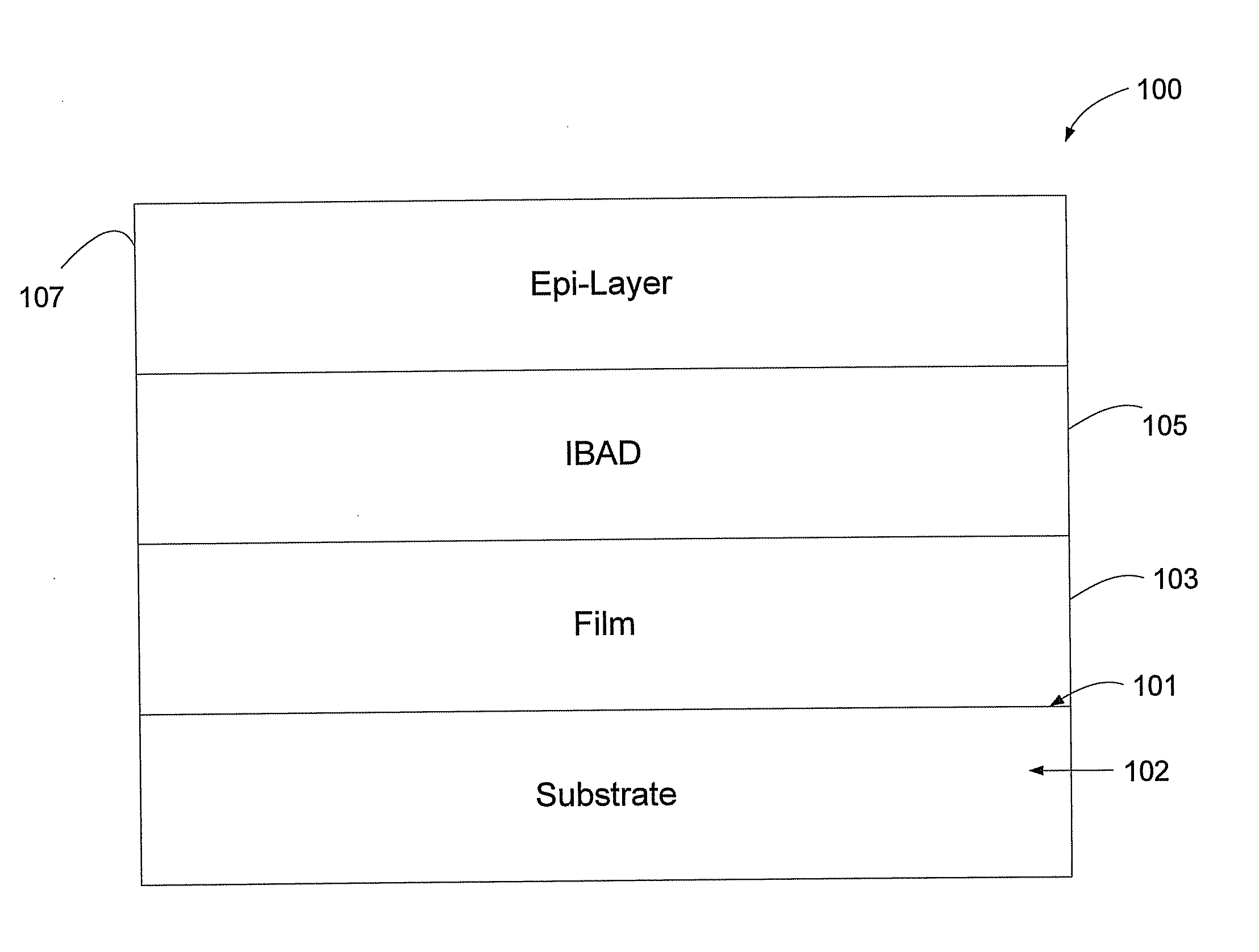Universal nucleation layer/diffusion barrier for ion beam assisted deposition
a technology of ion beam and nucleation layer, which is applied in the direction of superconductor devices, instruments, transportation and packaging, etc., can solve the problems of limiting the effective use of this substrate preparation method, affecting the effect of ion beam deposition, etc., to achieve a wide range of thicknesses and vary surface roughness
- Summary
- Abstract
- Description
- Claims
- Application Information
AI Technical Summary
Benefits of technology
Problems solved by technology
Method used
Image
Examples
Embodiment Construction
[0033]According to the embodiment(s) of the present invention, various views are illustrated in FIG. 1 and like reference numerals are being used consistently throughout to refer to like and corresponding parts of the invention for all of the various views and figures of the drawing. Also, please note that the first digit(s) of the reference number for a given item or part of the invention should correspond to the Fig. number in which the item or part is first identified.
[0034]One embodiment of the present invention comprising the steps of cleaning a substrate with a 40 mA / 600 eV reactive ion beam with a volumetric flow rate of 5 / 5 / 6 sccm of Ar / Ar / O2 for source / neutralizer / source, respectively for 1 to 5 minutes; depositing 20 to 240 nm of amorphous Si—O at ˜0.2 nm / s with the assistance of the reactive ion beam; and depositing 3 to 6 nm of biaxially-oriented IBAD MgO layer at ˜0.2 nm / s with the assistance of the reactive or inert ion beam using standard conditions and growing homo-e...
PUM
| Property | Measurement | Unit |
|---|---|---|
| thickness | aaaaa | aaaaa |
| thickness | aaaaa | aaaaa |
| critical currents | aaaaa | aaaaa |
Abstract
Description
Claims
Application Information
 Login to View More
Login to View More - R&D
- Intellectual Property
- Life Sciences
- Materials
- Tech Scout
- Unparalleled Data Quality
- Higher Quality Content
- 60% Fewer Hallucinations
Browse by: Latest US Patents, China's latest patents, Technical Efficacy Thesaurus, Application Domain, Technology Topic, Popular Technical Reports.
© 2025 PatSnap. All rights reserved.Legal|Privacy policy|Modern Slavery Act Transparency Statement|Sitemap|About US| Contact US: help@patsnap.com


